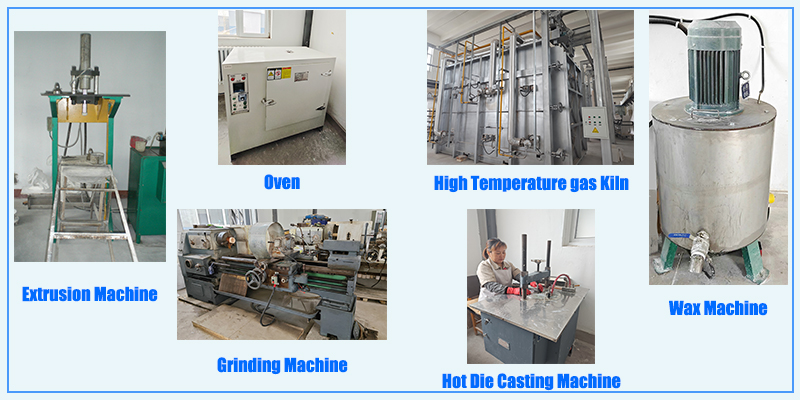The Working Principles and Performance Characteristics of Various Types of Sintering Furnaces for Advanced Ceramics

The sintering furnace plays a very important role in the preparation process of alumina ceramics. Sintering is a key link in the preparation process of alumina ceramics. Its function is to heat-treat the formed green ceramic body at a high temperature to promote the bonding and densification between ceramic particles, and finally obtain ceramic materials with excellent properties. It not only affects the structure and properties of ceramic materials, but also influences the efficiency and environmental friendliness of the entire manufacturing process. In order to obtain ceramic materials with excellent properties, it is necessary to select the appropriate type and parameters of the sintering furnace, and carry out reasonable operation and maintenance. This article introduces and differentiates some of the existing sintering furnaces on the market:
Types of Alumina Ceramic Sintering Furnaces
① Vacuum sintering furnace: Sintering is carried out in a vacuum state, which is suitable for the sintering of high-temperature and high-purity alumina ceramic materials.
② Atmosphere sintering furnace: Sintering is carried out under a specific atmosphere, such as nitrogen, argon, etc., which is suitable for ceramic materials that are sensitive to the atmosphere.
③ Hot pressing sintering furnace: Sintering is carried out by applying pressure, which is suitable for porous and complex-structured alumina ceramic materials.
Introduction to the Working Principles, Advantages and Disadvantages of Various Types of Sintering Furnaces
1. Vacuum Sintering Furnace:
The working principle of a vacuum sintering furnace is to place the alumina ceramic material in the furnace chamber, and then evacuate the furnace chamber to a vacuum state. Subsequently, the furnace chamber is heated to make the alumina ceramic material reach a high-temperature state, thereby enabling chemical reactions and crystallization to occur. During the sintering process, parameters such as temperature, vacuum degree, and pressure can be controlled to regulate the quality and performance of alumina ceramic products.
Advantages:
(1) In a vacuum environment, problems such as oxidation and pollution can be avoided, making it suitable for the sintering of high-purity and high-temperature alumina ceramic materials.
(2) The sintering atmosphere can be controlled to ensure the quality and stability of the sintering process.
Disadvantages:
(1) The equipment cost of the vacuum sintering furnace is relatively high, and the operation and maintenance costs are also relatively high.
(2) The operation in a vacuum environment requires professional skills and experience, and the operation difficulty is relatively large.
2. Atmosphere sintering furnace:
The working principle of an atmosphere sintering furnace is to achieve the sintering and hardening of alumina ceramic materials by controlling the atmosphere inside the furnace. An atmosphere sintering furnace for alumina ceramics usually consists of components such as a heating device, a pressure mechanism, a sintering chamber, and a gas control system. During the sintering process, the alumina ceramic material is first placed into the furnace, and then the temperature inside the furnace is raised to the required temperature through the heating device. At the same time, the atmosphere inside the furnace, such as nitrogen, argon, etc., is controlled by the gas control system to maintain a suitable sintering environment.
Advantages:
(1) Sintering under a specific atmosphere enables the control of the composition and structure of alumina ceramic materials, thereby improving the product quality.
(2) For ceramic materials that are sensitive to the atmosphere, the atmosphere sintering furnace has unique advantages.
Disadvantages:
(1) The atmosphere sintering furnace requires the use of specific gases, and there are relatively high requirements for gas supply and emission treatment.
(2) For different ceramic materials, it is necessary to adjust and optimize the composition of the atmosphere, and the operation is relatively complex.
3. Hot Pressing Sintering Furnace:
The working principle of a hot pressing sintering furnace is to utilize high temperature and high pressure in a vacuum environment to heat the alumina ceramic powder to a certain temperature, causing it to melt and fuse into a solid material under the action of high pressure.
Advantages:
(1) By applying pressure during the sintering process, it is possible to manufacture ceramic materials with complex structures and a porous nature.
(2) Hot pressing sintering can promote the densification of alumina ceramic materials, thereby improving the strength and performance of the products.
(3) The hot pressing sintering furnace has the advantages of a short sintering time, excellent product performance, and high production efficiency.
(4) Since hot pressing sintering is carried out in a closed environment, it can effectively prevent oxidation and contamination, thus improving the quality of the products. Therefore, the hot pressing sintering technology is widely used in the preparation of various high-performance alumina ceramic materials.
Disadvantages:
(1) The equipment cost of the hot pressing sintering furnace is relatively high, and it requires professional operation and maintenance.
(2) During the process of applying pressure, it is necessary to ensure the uniformity and stability of the pressure to avoid defects in the products.

